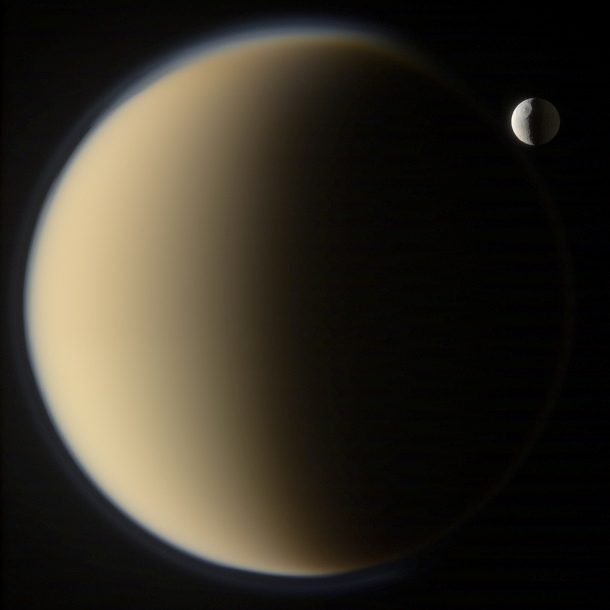
A NASA/JPL simulation of Titan’s atmosphere suggests a chaotic chemical brew conducive to life on Saturn’s most interesting moon. “Now we know that sunlight in the Titan lower atmosphere can kick-start more complex organic chemistry in liquids and solids rather than just in gases.” (Titan image via this 2011 post.)

